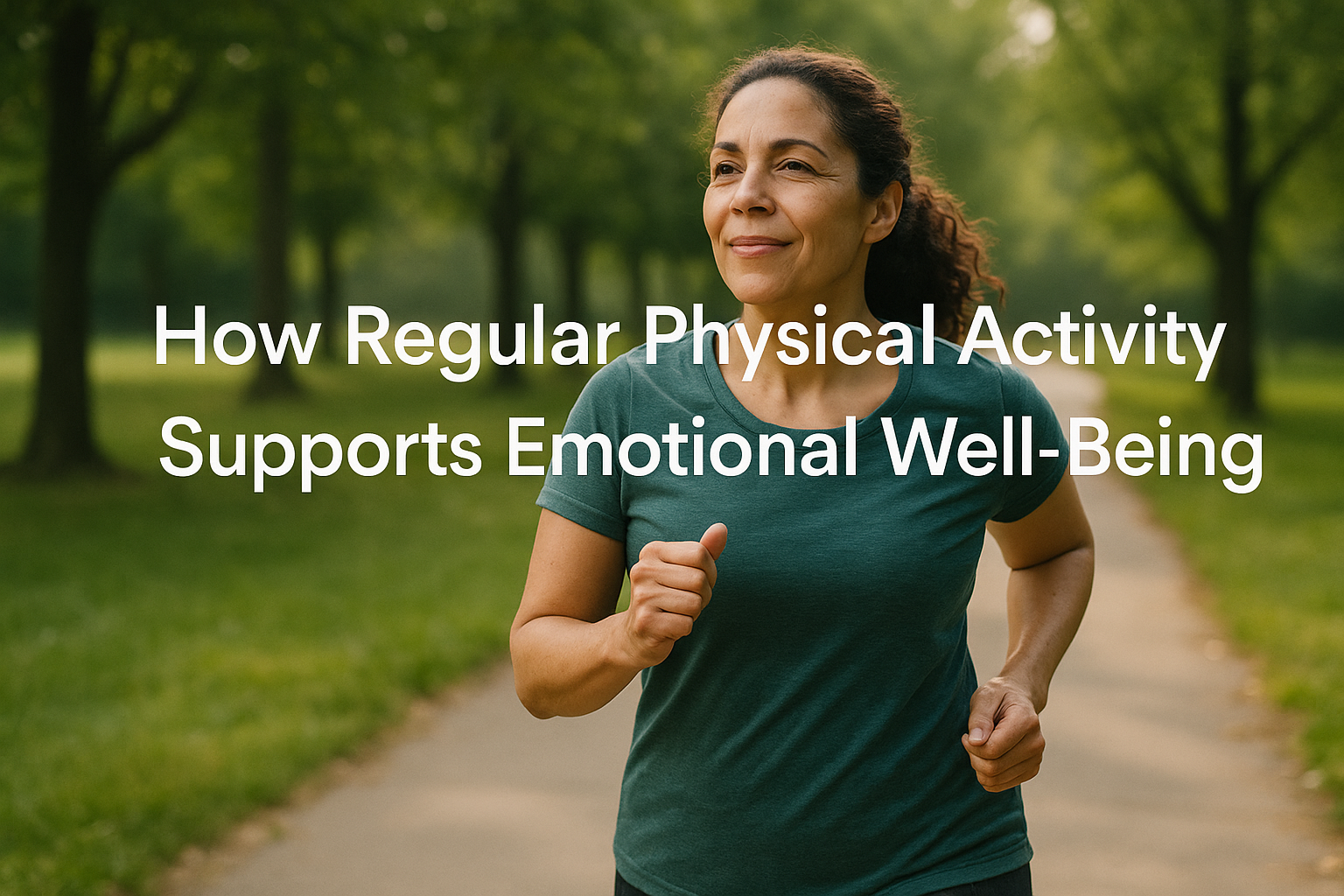When people think of exercise, they often focus on weight loss, muscle building, or physical fitness. But one of the most overlooked benefits of movement is its impact on emotional health. Regular physical activity is one of the most effective ways to regulate mood, reduce anxiety, manage stress, and even prevent depression. You don’t need to train like an athlete to feel the difference — consistent, moderate movement can do wonders for your mind and emotions.
The Science Behind Movement and Mood
Exercise stimulates the production of endorphins — the brain’s natural “feel-good” chemicals. These chemicals act as natural mood elevators, reducing pain perception and increasing feelings of well-being. Physical activity also boosts serotonin, dopamine, and norepinephrine, all of which help regulate mood and energy levels.
In addition, movement reduces levels of the stress hormone cortisol, helping your body return to a state of calm more quickly after challenges.
Reduces Symptoms of Anxiety and Depression
Multiple studies have shown that consistent exercise can reduce symptoms of anxiety and mild to moderate depression. Movement distracts the mind, reduces worry, and provides a sense of control and accomplishment. In some cases, exercise can be as effective as medication — without the side effects.
Releases Emotional Tension Stored in the Body
Emotions live in the body. Stress, sadness, anger, and fear often manifest as tight muscles, shallow breathing, or tension in the shoulders, neck, and chest. Moving your body helps release that tension physically, creating emotional relief. Activities like yoga, walking, dancing, or stretching allow you to express and process feelings through motion.
Improves Sleep and Energy Levels
When your body is physically active during the day, it’s easier to relax at night. Exercise helps regulate your sleep-wake cycle, promoting deeper, more restorative sleep. Better sleep improves mood, reduces irritability, and enhances emotional stability. It also boosts natural energy levels, reducing fatigue and brain fog.
Boosts Self-Esteem and Confidence
Regular movement builds a sense of accomplishment. Whether it’s completing a walk, mastering a new stretch, or simply showing up when you didn’t feel like it — these moments boost confidence. You begin to trust your body, appreciate its strength, and feel more connected to yourself.
Provides a Mental Break
Exercise gives your mind something different to focus on. Instead of spinning thoughts or emotional overwhelm, you shift into your body. This physical presence offers a break from mental noise, helping you return to your daily life with more clarity and calm.
Encourages Social Connection
Group exercise classes, walking with a friend, or joining a local hiking group can offer a sense of community and emotional support. Social connection is essential for emotional health, and combining it with movement creates a double benefit — both physical and emotional nourishment.
What Counts as Physical Activity?
You don’t need to go to a gym or follow a strict routine. Emotional benefits come from any form of movement that gets your heart rate up and feels good to your body. Examples include:
- Brisk walking
- Dancing
- Swimming
- Stretching or yoga
- Biking
- Strength training
- Gardening or active housework
The key is consistency, not intensity.
How to Make It a Habit
- Start small: 10–15 minutes a day is enough to begin.
- Choose something you enjoy: Don’t force yourself into activities you hate.
- Pair it with another habit: Walk after lunch, stretch while watching TV.
- Track your mood: Notice how you feel after movement. Let that motivate you.
- Be kind to yourself: Rest when needed. Progress, not perfection.
Final Thought: Move Your Body, Heal Your Mind
Movement is more than physical — it’s emotional, mental, and deeply human. When you move your body with care and intention, you create space for joy, release, and resilience. Whether it’s a walk around the block or dancing in your living room, your body becomes a tool for healing. So move, not to change how you look, but to remember how it feels to be alive, strong, and at peace.
